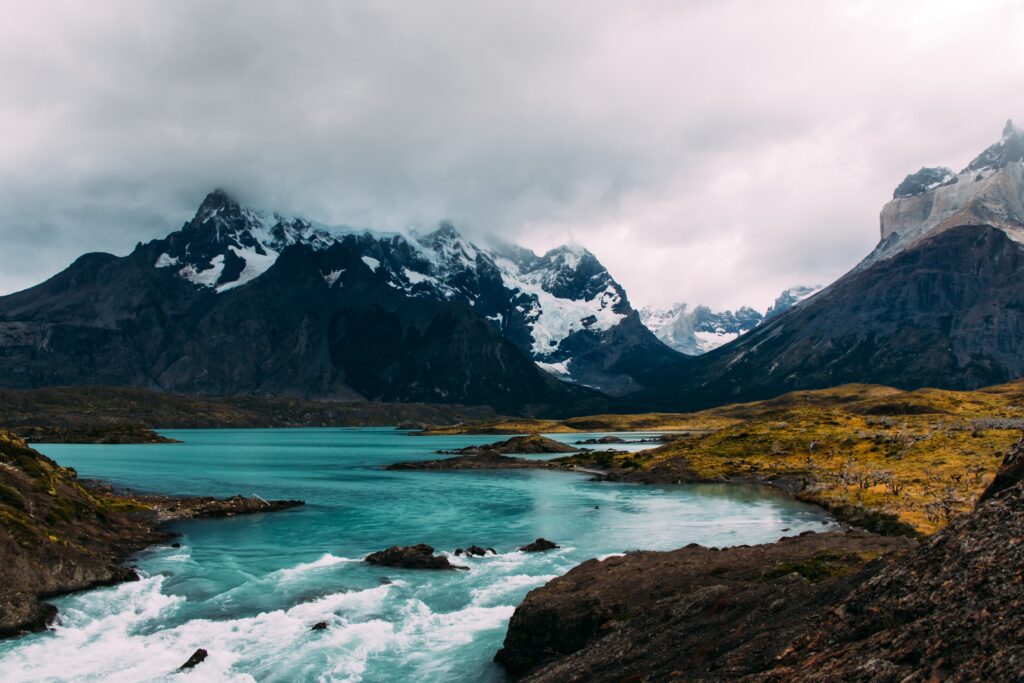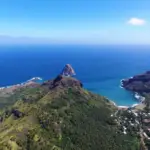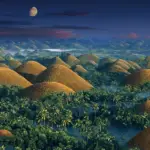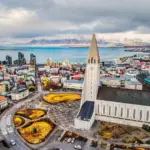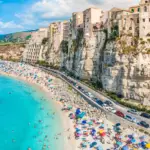
The Enigmatic Patagonia: Discovering the Exotic Place at the End of the World
But where is the Patagonia? Located in the southernmost tip of the American continent, Patagonia is a region that exudes a unique and mysterious charm. With its vast territory, shared between Argentina and Chile, This remote corner is known for its grandiose landscapes, unpredictable climate, and abundant biodiversity. In this article, we'll delve into Patagonia's fascinating atmosphere and explore its precise geographic location, highlighting the borders that connect it with these two neighboring countries.
Patagonia covers approximately 1 million square kilometers, stretching from the Atlantic Ocean to the Pacific Ocean. To the north, its borders are delimited by the Colorado River in Argentina and the Bío-Bío River in Chile.
At the southernmost point of the region lies Cape Horn, the southernmost point of the Americas. The territorial division between the two countries runs along the 52nd parallel south.
This political division resulted in two distinct areas: Eastern Patagonia belongs to Argentina and covers most of the region; while Western Patagonia belongs to Chile and includes the coastal areas along the Chilean fjords. Both parts enjoy stunning natural wealth that attracts travelers eager for experiences unique.

A Meeting of Surprising Climates and Landscapes
Patagonia is known for its unpredictable climate, where all four seasons can be experienced in a single day. The influence of the Humboldt Current in the Pacific Ocean and the warm ocean currents of the South Atlantic are determining factors in this climate fluctuation.
However, on average, the region experiences mild summers and harsh winters. Patagonian landscapes are equally diverse and stunning.
The region is marked by the majestic peaks of the Andes, towering imposingly on the horizon. Plateaus and undulating valleys stretch for miles, punctuated by crystal-clear rivers that flow vigorously until they reach the sea. Intense blue glacial lakes reflect the grandeur of the surrounding mountains.
But it's not just geography that makes Patagonia unique; its fascinating ecosystem is home to a rich variety of flora and fauna adapted to the harsh conditions of the environment. From vast steppes teeming with cold-resistant shrubs to lush subantarctic forests, there's a natural spectacle to admire in every corner of this enigmatic region.

The majestic Andes Mountains and their imposing mountains
Patagonia, located in the southern part of America South, is blessed with the imposing presence of the Andes Mountains. This impressive mountain range runs along the border between Argentina and Chile, creating a stunning landscape that attracts travelers and nature lovers from around the world. The Andean mountains in Patagonia reach impressive heights, such as Mount Fitz Roy, with its 3,405 meters high, and the famous Mount Aconcagua, which rises to an incredible 6,961 meters.
Plateaus, valleys and rivers that cross the region
Besides the majestic mountains, Patagonia's geography is also made up of vast plateaus, winding valleys, and rivers that meander through the region. The Patagonian plateaus offer a unique panoramic view of the surrounding lowlands, creating a sense of expanse and freedom for those who venture through these remote areas. The valleys carved by glacial movement over the centuries are true natural masterpieces, harboring rich biodiversity amidst stunning landscapes.
Patagonian rivers are true protagonists in this fascinating landscape. The Rio Negro, the Chubut, and the Santa Cruz are just a few examples of the waterways that crisscross the region.
These rivers are essential for wildlife and serve as a water source for local communities. They also offer incredible opportunities for sport fishing, where visitors can enjoy the thrill of catching trout and salmon amidst stunning scenery.
Stunning glacial lakes
Patagonia is known for its breathtaking glacial lakes, which add a serene beauty to the already spectacular landscape. These lakes, formed by the melting of glaciers over the years, display various shades of blue and turquoise, creating a truly magical setting.. The Argentine Lake is an iconic example of this natural wonder in the Patagonian region; with an impressive surface area of over 1,400 km² and an estimated maximum depth of around 500 meters.
Another notable example is Lake Nahuel Huapi, located on the border between Argentina and Chile. With its approximate area of 557 km² and crystal-clear waters surrounded by majestic mountains, this lake offers unparalleled panoramic views and attracts countless visitors every year.
Exploring these glacial lakes is an experience A unique place to enjoy the tranquility that emanates from these crystal-clear bodies of water. Many of them also offer the opportunity to take boat trips to get closer to the glaciers and witness the stunning beauty of the brilliant blue ice stretching to the horizon.

Fauna and flora of Patagonia
Iconic species such as the guanaco, puma and Andean condors
Patagonia is known for its rich diversity of iconic species that inhabit the region. One of the most emblematic is the guanaco (Lama guanicoe), a close relative of the llama and alpaca. These elegant animals, resembling golden-brown camels, are frequently spotted roaming the vast Patagonian plains and mountains.
Another majestic predator found in this area is the puma (Puma concolor). With their tawny coat and muscular body, these solitary felines silently roam Patagonian ecosystems in search of prey.
Furthermore, the Patagonian skies are adorned with the majestic flight of the Andean condor (Vultur gryphus), one of the largest birds in the world. Their impressive wingspan and black plumage stand out against the snow-capped mountains as they glide through the sky in search of food.
Varied ecosystems, from steppes to subantarctic forests
Patagonia's wild beauty lies in the richness of its diverse ecosystems. The region is home to a myriad of unique habitats ranging from vast steppes to lush subantarctic forests.
The steppes, with their vast plains covered in scrub vegetation, are home to a number of species adapted to arid conditions. Here, you can find animals such as rheas (Rhea pennata), large ostriches native to the region.
On the other hand, as we approach the wetter and colder areas, we enter the subantarctic forests. These lush ecosystems are home to trees such as the lenga (Nothofagus pumilio) and the coihue (Nothofagus dombeyi), which create an ideal environment for a variety of endemic species.
Importance of biodiversity conservation in the region
Patagonia boasts a unique and fragile biodiversity that must be protected for future generations. Preserving Patagonian ecosystems is essential to ensuring the survival of the region's iconic species and maintaining environmental balance. The loss of natural habitats can lead to population decline or even extinction of these iconic animals, in addition to negatively impacting the entire food chain associated with them.
Furthermore, Patagonia's diverse ecosystems provide essential services to humans, such as local climate control and natural resource provision. Therefore, ongoing conservation and environmental education efforts are essential to ensure the sustainability of these stunning landscapes and their precious species.

Indigenous influences from the Mapuche and Tehuelche tribes
THE Patagonian culture is deeply rooted in the indigenous influences of the tribes Mapuche and Tehuelche. These ethnic groups have a rich history and a deep connection to the land. The Mapuche are known as "the people of the land" and were historically nomadic, living according to the region's available natural resources.
They developed remarkable skills in fishing, hunting, and foraging. The Tehuelche, also known as the "people of the south," were expert hunters of guanacos, animals native to the region, whose meat was essential to their survival.
Traditional cuisine: Patagonian lamb stands out
Traditional Patagonian cuisine is a delight for the senses. One of the main highlights is Patagonian lamb, which has become a symbol of local cuisine. The lamb is prepared in a unique style called "asado al palo," where it is skewered on a long stick over hot coals outdoors.
The result is succulent, flavorful meat with crispy skin on the outside. Besides lamb, Patagonian cuisine also includes other delicious dishes that reflect the fusion of indigenous and colonial influences.
For example, centolla (giant crab) is a typical coastal dish and is prepared in a variety of ways, including in soups or as a filling for empanadas. Local fruits, such as calafate crab, are used to make desserts like mousses and jellies.
Local crafts
Patagonian crafts are a vivid expression of the indigenous culture and heritage that influences this region. Local artisans master traditional weaving skills, working with leather, stone, and wood to create unique and beautiful objects. Mapuche weaving is particularly notable in Patagonia, with women using ancestral techniques to create colorful tapestries called ruanes.
These pieces often depict elements of nature and stories traditions passed down through generations. Furthermore, leather also plays an important role in Patagonian crafts.
Workers transform the skins of locally raised animals into finely detailed products such as handbags, belts, and wallets. The use of semi-precious stones and carved wood also adds a unique touch to local handcrafted pieces.
Conclusion
Patagonia goes beyond its stunning landscapes; it's home to a rich culture rooted in the indigenous influences of the Mapuche and Tehuelche tribes. Traditional Patagonian cuisine delights palates with iconic dishes like Patagonian lamb, while local crafts are an artistic and skillful expression that showcases the region's cultural heritage. Exploring Patagonian culture is a way to immerse yourself in ancient traditions that remain alive today.
It's an opportunity to appreciate the authenticity of a region that values its roots and preserves its unique identity. Patagonia is truly a place where nature and culture intertwine, providing an enriching experience for all those who have the privilege of visiting it.
Lucas Wanderlust has a tireless spirit of adventure, always seeking new travel experiences. Fascinated by the world and the possibility of exploring unknown destinations, he fell in love with the sense of freedom and self-discovery that traveling alone provides. With a backpack on his back and a heart open to the unknown, Lucas embarks on exciting journeys, where each destination becomes a unique chapter in his life story. He gives himself body and soul to the magic of solo travel, inspiring others to follow in his footsteps and discover themselves through adventure.

